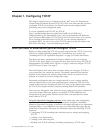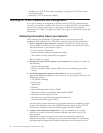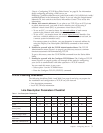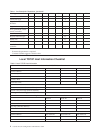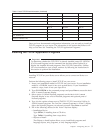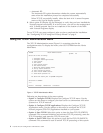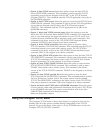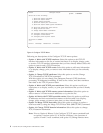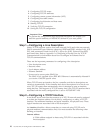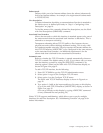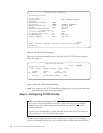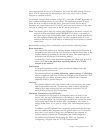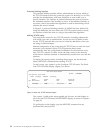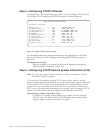
server) was removed from the menu. Option 12, formerly Change local
domain and host names, was renamed to Change TCP/IP domain
information.
v Option 20. Configure TCP/IP applications: Select this option to configure the
TCP/IP applications that are installed on your system. The list of applications
varies depending on whether the TCP/IP licensed program is installed on your
system. If the TCP/IP licensed program is not installed on your system, you can
configure only the following server applications:
– Simple Network Management Protocol (SNMP)
– Bootstrap Protocol (BOOTP) server
– Trivial File Transfer Protocol (TFTP) server
– Route Daemon (RouteD)
If the TCP/IP licensed program is installed on your system, you can configure
the following server applications:
– Simple Mail Transfer Protocol (SMTP)
– File Transfer Protocol (FTP), TELNET
– Post Office Protocol (POP) Version 3 mail server
– Line Printer Daemon (LPD)
– Remote Execution (REXEC) server
– Workstation gateway applications
– Simple Network Management Protocol (SNMP)
v Option 21. Configure related tables: Select this option to configure the tables
related to TCP/IP. These tables are:
– Protocol table
Contains a list of protocols used in the Internet.
– Services table
Contains a list of services and the specific port and protocol a service uses.
– Network table
Contains a list of networks and the corresponding IP addresses for that
network.
v Option 22. Configure point-to-point TCP/IP: Select this option to define,
change, or display your TCP/IP point-to-point (SLIP) configuration.
Configuring TCP/IP using the EZ-Setup Wizard
If you are setting up a new iSeries, use the EZ-Setup Wizard to establish a
connection and to configure TCP/IP for the first time. The CD-ROM containing the
EZ-Setup Wizard is packaged with your new iSeries. The wizard steps you through
a process that will get your iSeries up and running.
Note: If you are unable to use the EZ-Setup Wizard, you may use the command
line interface to configure TCP/IP. See the next section for these instructions.
Configuring TCP/IP using the Command Line Interface
The following steps using the command line interface will guide you through
configuring TCP/IP on your iSeries server:
1. Configuring line descriptions
2. Configuring TCP/IP interfaces
Chapter 1. Configuring TCP/IP 9



